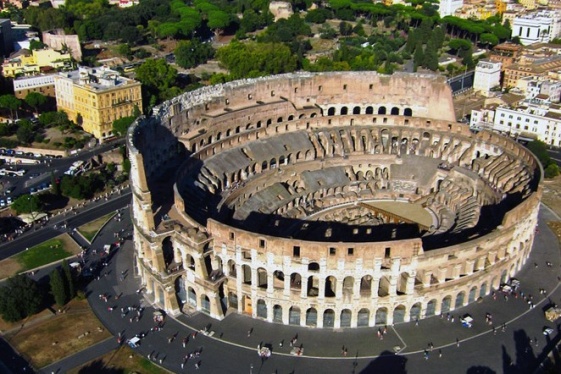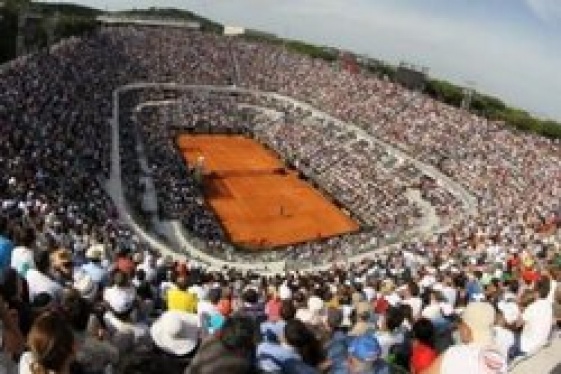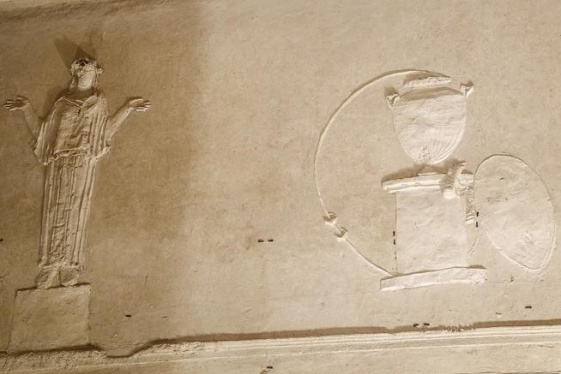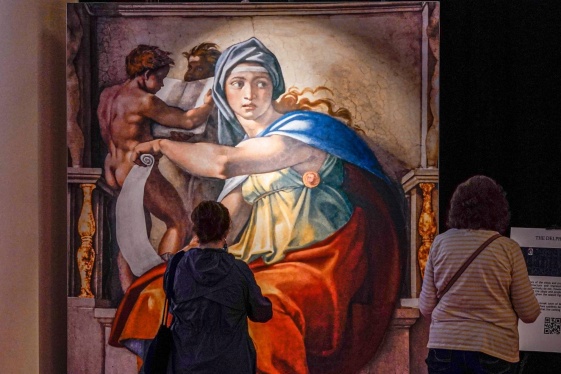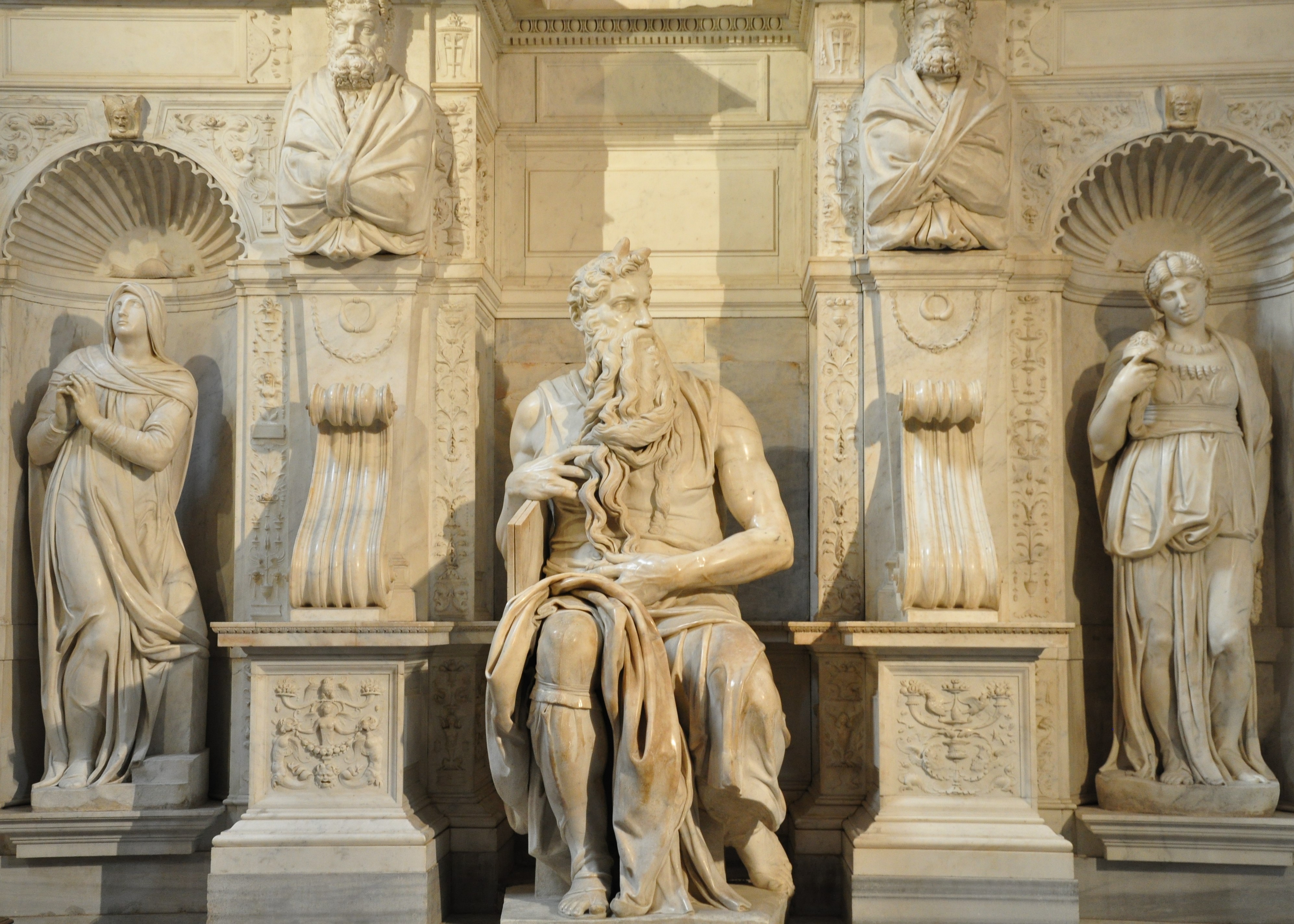

Tucked away in the beautiful Rione Monti, in Rome, in the quaint church of San Pietro in Vincoli, there is one of the greatest masterpieces of Italian art, Michelangelo's Moses, an example of superb craftsmanship and incomparable beauty.
Where: The Rione Monti
Monti is one of the most popular and beautiful areas of Rome. It is crossed by Via Cavour which goes from the Imperial Forum to reach the Esquiline Hill. Half way along Via Cavour, on the right, you meet the steep steps of Via San Francesco di Paola; by climbing these narrow steps you reach Piazza di San Pietro in Vincoli, dominated by the sixteenth-century façade of the same-named church.
Church of San Pietro in Vincoli
San Pietro in Vincoli was founded in the fifth century by the Empress Eudoxia in order to guard a precious relic: the chain with which St. Peter was bound as a prisoner in Jerusalem which is now preserved under the high altar and is exposed to the faithful people on August 1st of each year. Rebuilt in the VIII century, it underwent further works to the facade and portico in 1500, while the interior was changed in the '700.
A portico with five arches supported by octagonal pillars that bear the coat of arms of Pope Julius II on the capitals stands in front of the church. The interior of the church, with a basilica plan, is divided into three naves, separated by 20 Doric columns of Greek marble.
The statue
From 1545, in the right transept of the church you can admire one of the masterpieces of the sixteenth century: Michelangelo's Moses. The colossal statue carved in 1513 to adorn the tomb that Julius II had commissioned to Michelangelo, was not completed until the death of the pope, who is in fact buried in St. Peter's Basilica in the Vatican.
The work inspired by Raphael and Donatello, depicts a majestic Moses sitting with the Tablets of the Law under his arm, while his other hand fondles his long beard, which according to Vasari was carved with such perfection that it seems more a "work of brush than chisel".
The moment represented by Michelangelo is the one which follows the delivery of the Commandments on Mount Sinai, when Moses finds the Israelites intent in worshiping a golden calf, a sign of worship of other gods. Moses is angry and seems to be on the verge of getting up and destroying everything. An anger which is perfectly expressed by the swollen veins and tensed muscles that appear to give life to the marble.
Trivia
Because of disagreements between the Pope and Michelangelo, the work destined to St. Peter's Basilica was located in San Pietro in Vincoli. Julius II was in fact completely absorbed by the reconstruction of the basilica and had set aside the idea of the mausoleum.
The horns on the head of Moses apparently result from an incorrect translation of the Exodus book which says that as Moses came down from Sinai, he had two rays on his forehead. The Jewish "karan" or "karnaim" - "rays" - may have been confused with "keren" - "horns".
According to many critics this was one of Michelangelo’s favourite works as he considered it extremely realistic. Chronicles narrate that the artist, once the work was finished, hit it and ordered it to speak.
Recently a team of researchers from the University "La Sapienza" of Rome measured visitors’ brain activity whilst observing Michelangelo’ Moses in the Church of San Pietro in Vincoli, in order to try to demonstrate how much emotion is created by great beauty, possibly that of a masterpiece.
You may be interested
-
Exciting Palatine. Interview with Clementina...
You can tell she fills with excitement when she has the chance to show an important archae...
-
Italian Open's History and Records: A tale o...
For Italians, and Romans in particular, the Open is not just a tennis tournament where cha...
-
'Basilica of Mysteries' reborn in Rome
The so-called 'Basilica of the Mysteries' has been reborn in Rome. The basilica, one of th...
-
'Carbonara Day' celebrates famous pasta dish
On Friday, April 6, the world will celebrate "Carbonara Day", an occasion launched by the...
-
'Gladiators' bring Roman flavor to R.I. polo
As thousands of sharply dressed spectators converged on the turf of Newport International...
-
'Hot priests' grace Rome's calendar
It is officially called the Calendario Romano, or Roman Calendar. But on the streets of Ro...
-
'Michelangelo’s Sistine Chapel: The Exhibitio...
Michelangelo's famed frescos from the ceiling of the Sistine Chapel in Vatican City are on...



